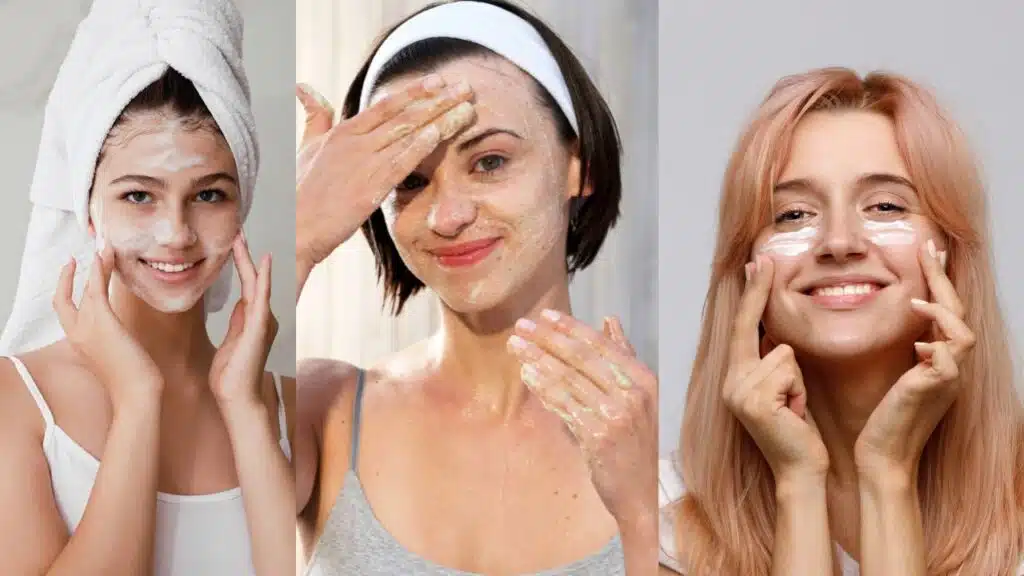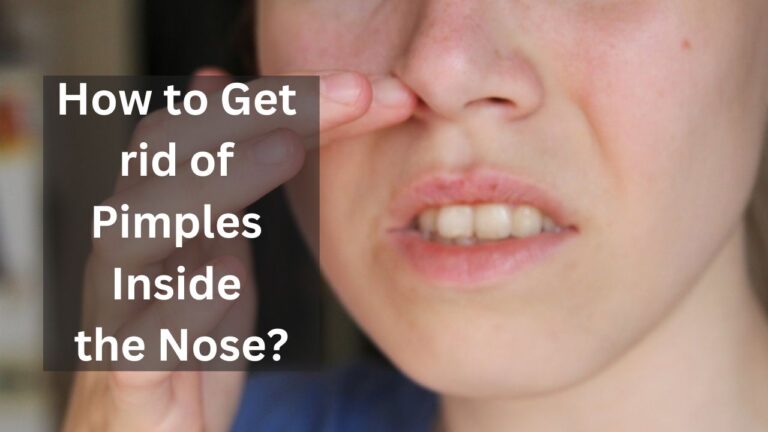What are good skincare tips for Oily skin?
How to control oily skin? your ultimate guide to a clear and well-balanced skin. Handling oily skin is tricky but with some information on how to go about it, you can manage to control the condition of your skin. Through this article, we will discuss what contributes to greasy skin in addition to a basic but practical skincare regimen and suitable ingredients as well as items to eliminate extra oil.
Understanding Oily Skin
Oily skin is a common concern, and understanding its nature is the first step towards effective control. Characterized by an excess production of sebum, oily skin can lead to enlarged pores, acne, and an overall shiny complexion. Recognizing whether you have oily skin is crucial for tailoring your skincare routine appropriately.
What is Oily Skin?
Excessive secretion of sebum by these active sebaceous glands gives oily complexion. Although sebum helps to moisturize and hydrate the skin, excess production can contribute to many skincare problems, especially clogging of pores.
Recognizing Oily Skin
Identifying oily skin involves observing certain characteristics. If your skin tends to appear shiny, particularly in the T-zone (forehead, nose, and chin), and you often find yourself dealing with enlarged pores and frequent breakouts, chances are you have oily skin. Additionally, individuals with oily skin might notice that their makeup tends to slide off easily.
Causes of Oily Skin
Several factors contribute to the development of oily skin. Genetics play a role, as oily skin tends to run in families. Hormonal changes, especially during puberty, pregnancy, and menstruation, can also trigger excess sebum production. Environmental factors, such as high humidity, can exacerbate oily skin.
Skin Care Routine
Establishing a tailored skincare routine is key to managing oily skin effectively. Follow this step-by-step guide to keep excess oil in check and promote a clear, balanced complexion.
Step 1: Cleanse
Your daily routine should commence with use of mild oil free facial product. Cleansing twice daily – in the morning and at night removes excessive oils, dirt, and impurities without damaging the skin. Ensure that you buy cleansers containing salicylic acid or glycolic whichare effective in controlling oil production at the skin follicle level.
Step 2: Exfoliate
Exfoliating helps to clear blocked pores and rids your body of old cells. Add a salicylic acid-based exfoliate to your regimen and use it two to three times weekly. It aids in clearing pores as well as excessive oil to facilitate a better facial complexion.
Step 3: Apply Treatment
Niacin amide and/or benzoyl peroxide specifically target skin. Niaconic amide regulates oil production in the skin and gives a general betterment of texture while benzoil peroxide fights against bacteria which cause acnes. Treat only problematic areas with the minimum amount of treatment.
Step 4: Moisturize
Surprisingly, skin require moisturizing. Instead, hydrating oil-free non-comedogenic moisturizer should be used to prevent blocking off of pores while still maintaining enough moisture to keep the skin adequately hydrated. Ensure that you use a gel moisturizer as it offers moisture and is not oily.
Step 5: Apply SPF
The use of a broad-spectrum sunscreen will help protect you against UVA and UVB rays that are damaging for the skin. Opt for an oil free, lightweight cream containing sunscreen factor minimum of 30. Sun screen does not only prevent sun damage but also controls oil-production.

Best Ingredients
Oily skin benefits from specific ingredients that help regulate sebum production and promote a balanced complexion.
Niacinamide: Another active component involved is niacinamide/Vitamin B3 which effectively helps fight acne by controlling excessive sebum production on the surface of the skin to keep it supple and prevent breakouts from developing into pustules. It does this by controlling sebum secretion, smoothening skin texture and minimizing pore appearance.
Salicylic Acid: As an exfoliant, salicylic acid is capable of going into the pores removing excess oil and acne. The product exfoliates and cleans the pores leaving the skin fresh.
Benzoyl Peroxide: Benzoyl peroxide kills the bacteria causing the acne breakouts leading in reduction of inflammatory eruptions. For instance, it’s perfect for people suffering from acne-prone skin and those who have an excess of oil.
Glycolic Acid: Glycolic acid is a type of alpha hydroxy acid (AHA) which helps in the removal of dead skin and thus facilitating the renewal of cells. It will assist in reducing oil and enhancing the natural glow.
Retinol: Retinol, popular for its anti-ageing effects, also regulates sebum production. It promotes cell turnover, so pores are not blocked by extra oil and skin cells.
Common Mistakes and Things to Avoid
Controlling oil skin requires one to note some common mistakes which usually make the situation worse. In such cases, dermatologists always advise some precautions that people should take if they have oily skins.
Do’s and Don’ts from Dermatologists:
Dermatologists advise people to wash gently two times in a day not to strip the skin of its natural oils. Choose oil free, non comedogenic products to prevent plugged pores. Moreover, incorporating other toners containing essentials such as salicylic acid will also contribute greatly towards minimizing oiliness.
Mistakes in Skincare Routines:
One common mistake is neglecting to moisturize. Oily skincare still requires hydration, and choosing the right, lightweight moisturizer is key. Another misstep is skipping sunscreen. Sun protection is crucial for everyone, and choosing a non-greasy SPF is essential for oily skin.
Special Considerations
Skincare is not one-size-fits-all, and considerations for different skin tones and specific conditions are essential for a comprehensive approach to managing oily skin.
Skincare for Darker Skin Tones:
Hyperpigmentation can affect those individual who possess a darker skin tone in particular. Individuals may look for products containing Niacinamide as it addresses both issues of blemished skin and acne by enhancing clarity and glow of the face.
Skincare for Men:
In that regard, men usually tend to have thicker skins, with larger pores, which make them susceptible to skin. It should be simple as well as consistent comprising of washing and applying moisturizer. Seek out targeted male cosmetics that effectively absorb grease.
Natural Solutions
For those inclined towards a more natural approach to skincare, there are effective and affordable options to control oil on face.
Natural Ingredients:
Natural ingredients like witch hazel, tea tree oil, and aloe vera possess oil-regulating and soothing properties. Witch hazel acts as a natural astringent, tea tree oil has antimicrobial properties, and aloe vera provides hydration without clogging pores.
Keep it Affordable:
Effective skincare is not expensive. Witch hazel toners, as well as tea tree oil spot treatments and aloe vera gel, are inexpensive products that can work their way into your routine easily, while guaranteeing effective results at a small price.
Dealing with Acne
Oily skin often goes hand in hand with acne, requiring targeted solutions for effective control and prevention.
Special Care for Acne-Prone Oily Skin:
If you’re dealing with both oily skin and acne incorporating products with salicylic acid or benzoyl peroxide can be highly beneficial. These ingredients target acne-causing bacteria and help keep breakouts at bay.
Recommended Products:
Consider using cleansers, spot treatments, and moisturizers specifically formulated for acne-prone skin. Look for products that are non-comedogenic and designed to regulate oil production while addressing acne concerns.
Dermatologist Advice
When it comes to skincare, consulting a dermatologist can provide personalized guidance and recommendations for effectively managing oily skin.
Finding a Dermatologist:
Locating a qualified dermatologist is crucial for understanding your skin’s unique needs. Consider recommendations from friends, family, or your primary care physician. Online directories and reviews can also help you find a dermatologist with expertise in skincare.
Cosmetic Treatments:
Dermatologists can offer advanced solutions for oily skin, including cosmetic treatments like chemical peels or laser therapies. These procedures can help control oil production and improve overall skin texture.
Conclusion:
In the pursuit of controlling oily skin, we’ve navigated through essential insights and actionable steps to foster a clear and balanced complexion. Understanding the nature of oily skin, establishing a tailored skincare routine, and incorporating effective ingredients have been the pillars of our journey.
By avoiding common mistakes, considering special skincare needs for different skin tones and genders, and exploring natural solutions, we’ve crafted a comprehensive guide suitable for diverse preferences and requirements. Acne-prone skin received specific attention, with targeted recommendations for effective control.
FAQs
1. What is best for oily skin face?
A light-textured, oil-free moisturizer is the best option for maintaining equilibrium while treating oily skin. A mild, non-comedogenic cleanser comes in first.
2. Is Vitamin E good for oily skin?
Because it contains antioxidants that promote skin health without aggravating oiliness, vitamin E may be good for oily skin.
3. Is Multani Mitti good for oily skin?
Due to its natural absorbent properties, Multani Mitti, also called Fuller’s Earth, helps manage excess oil and unclog pores, making it an effective remedy for oily skin.
4. How can I make my oily skin glow naturally?
A regular regimen will help oily skin seem naturally glowing. For a glowing complexion, try using a mattifying moisturizer after cleansing with a gentle face wash and incorporating moisturizing masks that are free of oil and contain herbs like cucumber or aloe vera.







One Comment